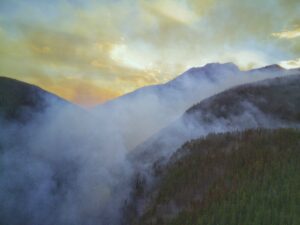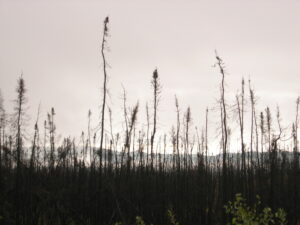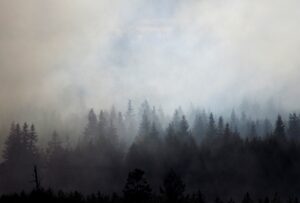Scorching heat and Canada wildfires could be tied to ‘wavy, blocky’ jet stream
Some researchers think climate change is disrupting the jet stream’s flow and causing it to bake regions in heat longer.

Scientists say a closely watched atmospheric pattern — the jet stream — is behind both the Canadian wildfires and the scorching heat in Texas, raising questions about how it shapes extreme weather events and whether climate change is disrupting its flow.
The jet stream, a ribbon of air that encircles the Northern Hemisphere at high altitudes, drives pressure changes that determine weather across North America. The jet stream’s wavy pattern creates areas of high and low pressure.
‘Never occurred before’: How the Arctic is sizzling Texas

The oppressive heat wave roasting Texas and Mexico is rekindling a scientific debate about the effects that Arctic climate change might have on weather patterns around the world.
Many experts say that rapid warming in the Arctic — where temperatures are rising four times faster than the global average — may cause an increase in these kinds of long-lasting extreme weather events.
Canada’s wildfire season is off to an ‘unprecedented’ start. Here’s what it could mean for the US

Raging wildfires in Canada have already scorched about 15 times the normal burned area for this time of the year: nearly 11 million acres — more than double the size of New Jersey — with more than 2 million acres concentrated in Quebec alone.
Canada’s fire season is only just beginning, and officials there warned this week it would continue to be severe through the summer. If it follows the pattern of a normal year, it will peak in the hotter months of July and August.
But this is anything but a normal year.
How Arctic ice melt raises the risk of far-away wildfires
The thawing of the polar region from climate change helps produce conditions that make distant forests more likely to burn.

As millions of people in New York and other major North American cities choke on acrid smoke, they could point their accusatory fingers farther North than the wildfires ravaging Quebec — all the way to the global Arctic.
Record pollution and heat herald a season of climate extremes
Scientists have long warned that global warming will increase the chance of severe wildfires like those burning across Canada and heat waves like the one smothering Puerto Rico.

It’s not officially summer yet in the Northern Hemisphere. But the extremes are already here.
Fires are burning across the breadth of Canada, blanketing parts of the eastern United States with choking, orange-gray smoke. Puerto Rico is under a severe heat alert as other parts of the world have been recently. Earth’s oceans have heated up at an alarming rate.
Human-caused climate change is a force behind extremes like these. Though there is no specific research yet attributing this week’s events to global warming, the science is unequivocal that global warming significantly increases the chances of severe wildfires and heat waves like the ones affecting major parts of North America today.
Continue reading on New York Times.
The wildfires in Canada are abnormally early and widespread this year. What’s at play?

In recent years, the word “wildfire” has conjured heartbreaking images that became grimly predictable: California ablaze, from its mighty forests to gracious vineyards and traffic-clogged highways of fleeing people.
It’s different this year, as the East Coast chokes on smoke blown south from abnormally early and widespread wildfires in Canada. Pennsylvania and New Jersey are now facing critical risks of fire danger, and more broadly the Northeast and Midwest also face elevated risks of wildfires, while California is at lower risk thanks to a record-high snow pack from this past winter.
What’s at play, climate scientists said, is an atmosphere increasingly roiled by conditions that can unpredictably shift areas of drought to deluge, as has happened in California, only to sow drought and excessive heat in another.
Continue reading on The Boston Globe.
Is this the end of lettuce? Why Canada’s food supply is headed for uncharted territory

Approximately three quarters of all produce consumed in Canada is imported, and California supplies a major chunk of that. So Canadians feel it when California is hammered by drought, flooding and other weather extremes.
Picture the Titanic, except filled with lettuce instead of passengers. Now picture five Titanics filled with lettuce, plus another half-filled ship. Picture this armada of ships, laden with romaine, spring mix, red leaf, green leaf, and iceberg, all setting sail for Canada.
This is how much lettuce our country imports every year: 265,000 metric tons in 2022 alone.
Read more on The Toronto Star.
‘Murderers’ and ‘criminals’: Meteorologists face unprecedented harassment from conspiracy theorists

“Murderers.” “Criminals.” “We are watching you.”
These are just a handful of the threats and abuse sent to meteorologists at AEMET, Spain’s national weather agency, in recent months. They come via social media, its website, letters, phone calls – even in the form of graffiti sprayed across one of its buildings.



